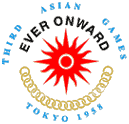
The 1958 Asian Games, officially the Third Asian Games and commonly known as Tokyo 1958, was a multi-sport event held in Tokyo, Japan, from 24 May to 1 June 1958. It was governed by the Asian Games Federation. A total of 1,820 athletes representing 20 Asian National Olympic Committees (NOCs) participated in the Games. The program featured competitions in 13 different sports encompassing 97 events, including four non-Olympic sports, judo, table tennis, tennis and volleyball. Four of these competition sports – field hockey, table tennis, tennis and volleyball – were introduced for the first time in the Asian Games.
The 1934 Far Eastern Championship Games was the tenth edition of the regional multi-sport event, contested between China, Japan and the Philippines, and was held from 16 to 20 May in Manila, the Philippines. A total of eight sports were contested during the four-day competition. The Dutch East Indies (Indonesia) participated at the games, becoming only the second nation outside of the traditional three to send a delegation to the event. The games were held at the then newly built sports complex, Rizal Memorial Field which was constructed on the former site of the Manila Carnival Grounds.
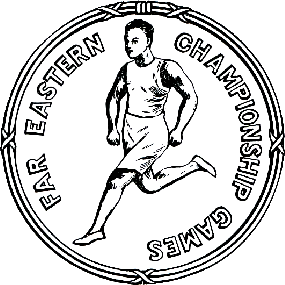
The Far Eastern Championship Games was an Asian multi-sport event considered to be a precursor to the Asian Games.
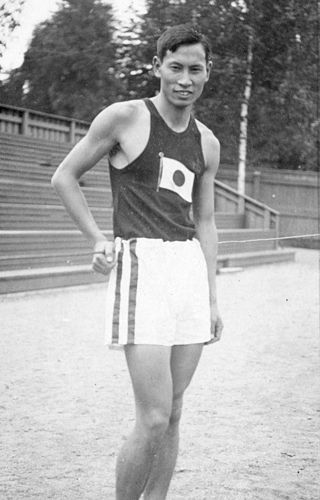
Mikio Oda was a Japanese athlete and the first Japanese Olympic gold medalist. He was the first Asian Olympic champion in an individual event.
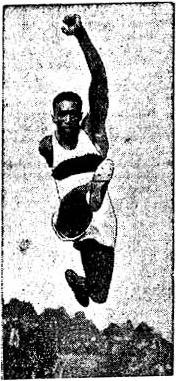
The men's triple jump event at the 1928 Olympic Games took place on August 2. Twenty-four athletes from 13 nations competed. The maximum number of athletes per nation was 4. The event was won by Mikio Oda of Japan, the nation's first medal in the men's triple jump. Levi Casey put the United States on the podium for the first time since 1924, with his silver. Vilho Tuulos of Finland took bronze, the first man to win a third medal in the event.

The men's triple jump event at the 1932 Olympic Games took place August 4. Sixteen athletes from 12 nations competed. The 1930 Olympic Congress in Berlin had reduced the limit from 4 athletes per NOC to 3 athletes. Chūhei Nambu of Japan won gold with a world record breaking jump. It was Japan's second consecutive gold medal in the men's triple jump; Japan also became the third nation to have two medalists in the event in the same Games as Kenkichi Oshima took bronze. Sweden took its first medal in the event since 1920 with Erik Svensson's silver.
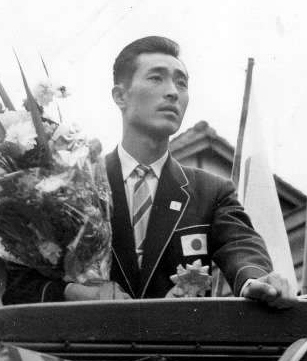
Teruji Kogake was a Japanese triple jumper and sports administrator. He set a low-altitude world record in the triple jump in 1956 at the Japanese Olympic Trials, and finished eighth at the 1956 Melbourne Olympics while having an ankle injury.
Elma Muros-Posadas also known as the "Long Jump Queen" of the Philippines and a heptathlon champion, is a former member of the Philippine Track and Field National Team and now a legend in Philippine track and field history who specialized in long jump. She also competed in the heptathlon, 100m and 400m hurdles, 100m, 200m, and 400m sprint alongside the "Sprint Queen" of the Philippines and also fellow legend, Lydia de Vega. Elma is one of the foremost track and field athletes produced by the Philippines under the Marcos regime's National Sports Program, Gintong Alay, that was launched in 1979, but was eventually disbanded in 1986 after the ousting of Ferdinand Marcos and replaced by the Philippine Sports Commission (PSC) in 1990.

The 1958 Asian Games, officially known as the Third Asian Games, was a multi-sport event held in Tokyo, Japan, from 24 May to 1 June 1958. A record total of 1,820 athletes representing 20 Asian National Olympic Committees (NOCs) participated in 13 sports divided into 97 events. The tradition of the torch relay was introduced for the first time in the Asian Games, and the Games cauldron was ignited by the first Japanese Olympic gold medallist and the first Asian Olympic champion in an individual event, Mikio Oda.
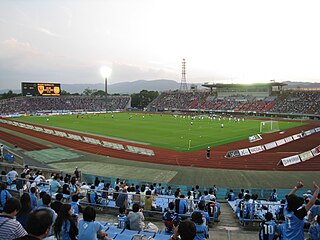
The Inter-Prefectural Women's Ekiden is an annual women's ekiden for Japanese runners held in January in Kyoto Prefecture. The course has a looped point-to-point format over the marathon distance of 42.195 km and begins and ends within the Nishikyogoku Athletic Stadium.
Maho Hanaoka is a Japanese former track and field athlete who competed mainly in the long jump and triple jump. She is one of Japan's best female athletes in the horizontal jumps: she holds the Japanese records for the triple jump outdoors with 14.04 m and is also the record holder in both the long and triple jump indoors. Her long jump best of 6.82 m is a former Japanese record, second to Kumiko Ikeda.

At the 1923 Far Eastern Championship Games, the athletics events were held in Osaka, Japan in May. A total of 19 men's athletics events were contested at the competition. It was the last time that track events were conducted over imperial distances, as the competition aligned with international standards in 1925 and began using metric distances. The triple jump event was contested for the first time.
The athletics events at the May 1925 Far Eastern Championship Games were held in Manila, Philippines. A total of 19 men's athletics events were contested at the competition. It was the first time that track events at this competition were conducted over the international standard metric distances, changing from the imperial distances that previously featured at the competition.
At the 1927 Far Eastern Championship Games, the athletics events were held in Shanghai, China in August. A total of 19 men's athletics events were contested at the competition.
At the 1930 Far Eastern Championship Games, the athletics events were held in Tokyo, Japan in May. A total of 19 men's athletics events were contested at the competition.
At the 1934 Far Eastern Championship Games, the athletics events were held in Manila, the Philippines in May. A total of 19 men's athletics events were contested at the competition. The 400 metres hurdles and 4×100 metres relay were contested for the first and only time, replacing the 200 m variants and conforming to the standard Olympic standard. This was the last edition of the games.

Fortunato Catalon was a Filipino track and field sprinter.
Region R. Ylanan was a Filipino athlete, physician, sports administrator, physical educator, and sports historian. He rose to fame with three gold medals in track and field at the 1913 Far Eastern Championship Games in Manila. He won two further medals at the 1915 Games and also represented his country in baseball at three editions of the tournament.
Genaro Saavedra was a Filipino track and field athlete and four-time Far Eastern Championship Games champion.
Kosaku Sumiyoshi was a Japanese track and field athlete. He represented his country twice at the Summer Olympics and was the first Asian to compete in the Olympic javelin throw. He was a three-time gold medallist at the Far Eastern Championship Games and the only person to win two javelin titles at the competition.










